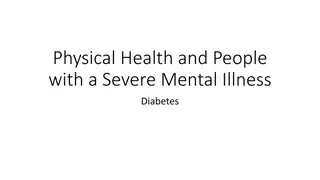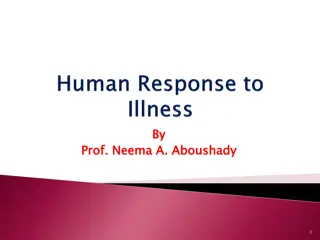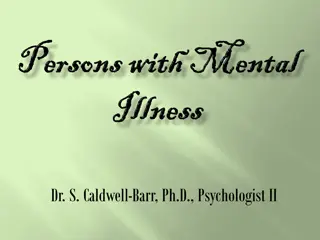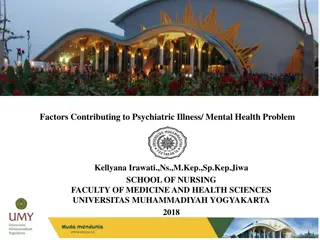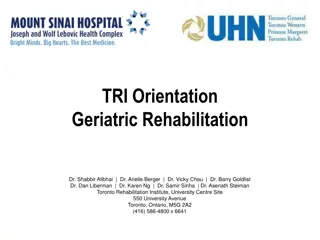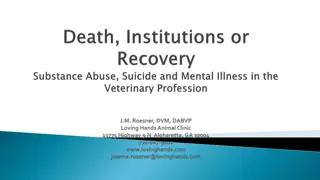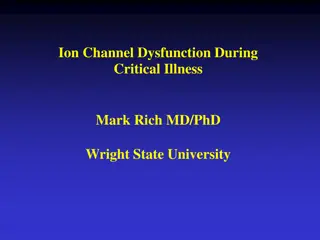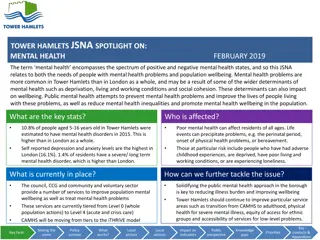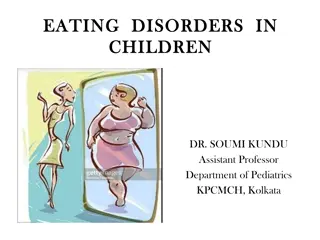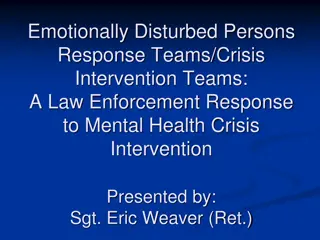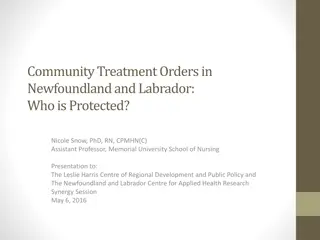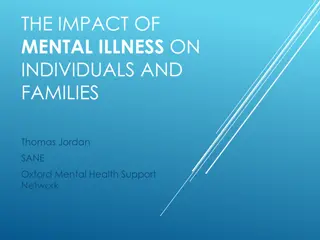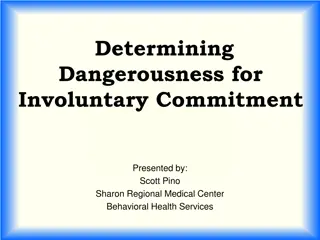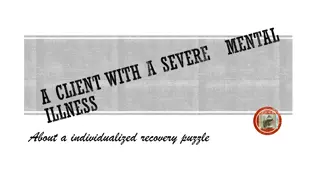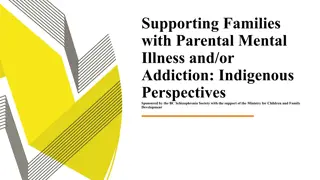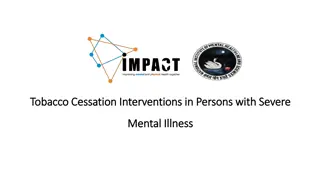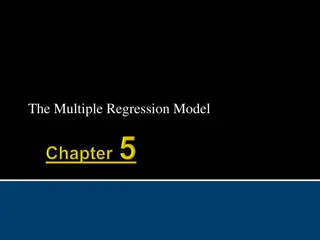Understanding the Biopsychosocial Model in Health and Illness
The Biopsychosocial Model, pioneered by George L. Engel and further developed by Theodore Millon, emphasizes the interconnected influences of biology, psychology, and social factors on health and illness. It highlights how genetic makeup, mental health, social environment, and interactions between these factors play a role in determining an individual's well-being. Biological, psychological, and social influences all contribute to a person's overall health, and their interactions are crucial in shaping one's health outcomes.
Download Presentation

Please find below an Image/Link to download the presentation.
The content on the website is provided AS IS for your information and personal use only. It may not be sold, licensed, or shared on other websites without obtaining consent from the author. Download presentation by click this link. If you encounter any issues during the download, it is possible that the publisher has removed the file from their server.
E N D
Presentation Transcript
BIOPSYCHOSOCIAL MODEL By Zainab Khalid (Clinical Psychologist)
Biopsychosocial Model Interactions between individual genetic makeup (biology), mental health and personality sociocultural environment (social world) contribute to their experience of health or illness. (psychology), and
History It was theorized by Psychiatrist George L. Engel. According to him, clinicians must attends simultaneously to the biological, psychological and social dimensions of illness. Later on, Theodore Millon has extensively researched the biopsychosocial model and has developed a systematic approach to understand the clinical presentation found in many treatment settings.
Biological Influences on Health The biological influences on mental health and mental illness are varied, and include genetics, infections, physical trauma, nutrition, hormones, and toxins. For example ,if one monozygotic twin develops schizophrenia, there is at least a 60% chance that the co- twin will also develop that disorder. From the prevalence in general population, it is clear that genetic factors play an important role in the development of this disorder.
Psychological factors The psychological component looks for potential psychological explanations for a health problem, such as lack of self-control, emotional turmoil, or negative thinking. For example, depression on its own may not cause liver problems, but a person with depression may be more likely to abuse alcohol, and, therefore, develop liver damage.
Social factors Social and cultural factors are conceptualized as a particular set of stressful events (being laid off, for example) that can differentially impact health depending on the individual and his or her social context. For example in mental disorders like anorexia nervosa (a disorder in which excessive and purposeful weight loss despite evidence of low body weight). The fashion industry and the media promote an unhealthy standard of beauty that emphasizes thinness over health. This exerts social pressure to attain this "ideal" body image despite the obvious health risks.
Biopsychosocial theory The biopsychosocial theory posits that each one of these factors is not sufficient to create health or mental illness, but the interaction between them determines the course of one's development.
Application of Biopsychosocial model Health promotion must address all three factors, as a growing body of empirical literature suggests that it is the combination of health status, perceptions of health, and sociocultural barriers to access health care that influence the likelihood of a patient engaging in health-promoting behaviors, like taking medication, proper diet or nutrition, and engaging in physical activity.
Application in Medicine A way of looking at the mind and body of patient as two important systems that are interlinked so the workings of the body can affect the mind and the workings of mind can affect the body. Interview process should encourage the patient to give as much information not about the physical symptoms, but how illness affects the patient.
How to apply Biopsychosocial model in Clinical practice Recognize that relationships are central to providing health care Use self-awareness as a diagnostic tool Elicit the patient s history in the context of life circumstances Decide which aspects of biological, psychological, and social domains are most important to understand and promoting the patient s health Provide multidimensional treatment
Limitation of Biopsychosocial Model Despite biopsychosocial model, including the degree of influence that each factor has, the degree of interaction between factors, and variation across individuals and life spans. its usefulness, there are issues with the
References Source: Boundless. The Biopsychosocial Model of Health and Illness. Boundless Psychology. Boundless, 21 Aug. 2015. Retrieved 21 Oct. 2015 from https://www.boundless.com/psychology/textbooks/boundless- psychology-textbook/stress-and-healthpsychology-17/introduction-to- health-psychology-85/the-biopsychosocial-model-of-health-and-illness326- 1286 Engel GL: The clinical application of the biopsychosocial model. Am J Psychiatry 1980;137:535-544.




